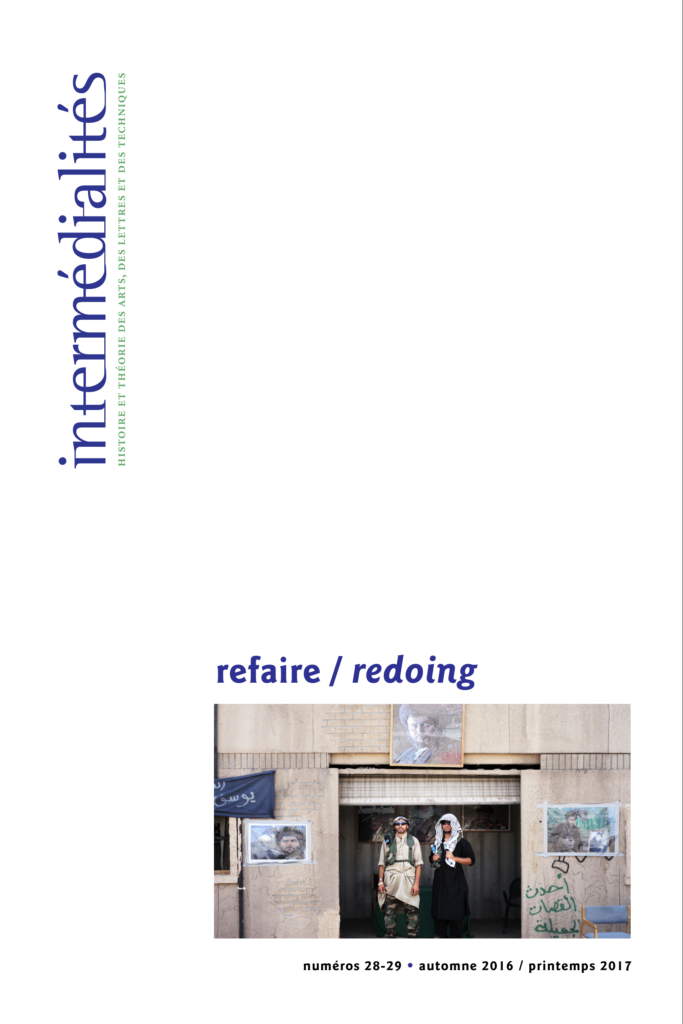Issue 28-29, Fall 2016 / Spring 2017
Guest-edited by Anne Bénichou
The term “re-enactment” refers to the phenomena of recreation, reconstitution, revival and other forms of live reactivation of performative works from the past, of historical events or cultural practices. The use of the term has recently been extended to technological and media objects. It now includes phenomena encompassing theatre, dance, visual arts, living history, museum exhibitions, cinema, television, video games, virtual worlds, and more. This diversity points to the emergence of new historical sensibilities and different kinds of relationships with the past. It requires interdisciplinary and intermedial approaches. How can we understand the relationships between re-enactment, media, technologies, archives and institutions? How can we think the body that is engaged in the process of remaking, as it goes through affects and kinesthetic memories? How do the games of immersion and distancing, subjugation and agency operate in re-enactment’s intermedial mode? By exploring these questions the authors meet the challenge of defining what redoing is.

